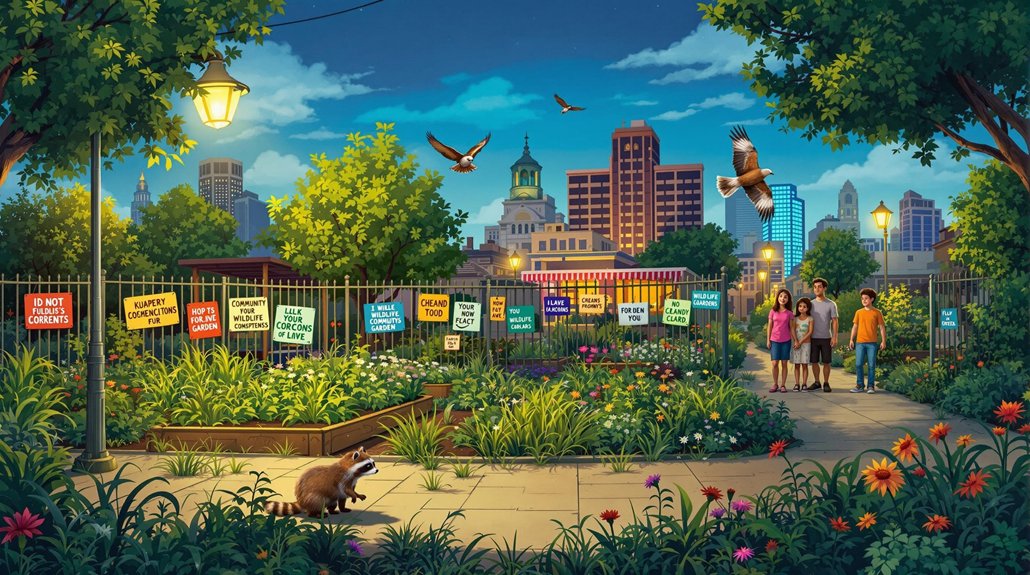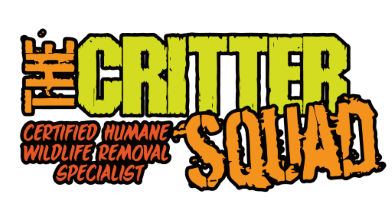Urban wildlife management in Texas faces many challenges. Habitat loss and fragmentation make it hard for animals to survive. Human activities often lead to conflicts, as wildlife search for food and shelter in urban areas. This can cause damage and safety issues. Innovative solutions, like wildlife corridors and community engagement, are essential for coexistence. Addressing these problems requires clear policies and effective management. There are more insights and strategies to explore in this important issue.
Key Article Highlights
- Urban development in Texas causes habitat loss and fragmentation, making it difficult for wildlife to thrive and find resources.
- Increased human-wildlife interactions lead to conflicts, posing safety risks for both animals and residents.
- Many species struggle to adapt to urban environments, resulting in reduced biodiversity and weakened ecosystems.
- Effective wildlife management requires community engagement and education to foster cooperation and understanding of local wildlife needs.
- Policy frameworks must be clear and adaptive to address the evolving challenges of urban wildlife management in Texas.
Understanding Urban Wildlife Dynamics
As urban areas expand, understanding urban wildlife dynamics becomes essential for effective management. Urban ecosystems are complex environments where various species adapt to life among people. Wildlife behavior changes in response to the challenges of city living. Animals learn to navigate roads, find food in trash, and seek shelter in parks or buildings. These adaptations can lead to both benefits and problems. For instance, some species thrive, while others struggle to survive. Understanding these dynamics helps communities create plans for coexistence. Proper management can support wildlife populations while keeping urban areas safe and enjoyable for residents. By studying urban wildlife, cities can learn to balance nature and human needs, promoting a harmonious relationship between people and animals. Recognizing raccoon nesting habits and other behaviors is crucial for mitigating property damage and health risks associated with these adaptable creatures. Additionally, awareness of specific raccoon control techniques, such as humane raccoon trapping, can help manage populations effectively without harming the animals. Implementing humane wildlife removal strategies ensures that coexistence efforts are both effective and ethical.
The Impact of Habitat Loss on Wildlife
When urban development encroaches on natural habitats, wildlife faces significant challenges. Habitat loss leads to habitat fragmentation, which splits areas where animals live. This fragmentation makes it hard for species to find food, shelter, and mates. As a result, many animals struggle to survive. Some species may adapt to new urban environments, but not all can adjust quickly enough. This adaptation often changes their natural behaviors and diets. The loss of large habitats also reduces biodiversity, making ecosystems weaker. Animals that cannot adapt may face extinction. The freedom of wildlife is threatened as their homes disappear. Overall, the impact of habitat loss is severe, affecting both wildlife and the health of urban ecosystems.
Human-Wildlife Conflicts in Urban Areas
Human-wildlife conflicts often arise in urban areas due to the increasing overlap between human activities and animal habitats. As cities expand, wildlife behavior changes to adapt to new urban habitats. Animals may search for food, shelter, or safety in places where people live. This can lead to encounters that upset both humans and animals. For example, raccoons and deer might invade gardens, while birds may nest in buildings. These interactions can cause damage and create safety concerns. People may feel threatened or frustrated, while animals face risks from vehicles and traps. Understanding wildlife behavior is essential to reduce these conflicts. Awareness and respect for both humans and wildlife can help create a more peaceful coexistence in urban settings. Recognizing opossum entry points and understanding their habits can be particularly helpful in managing conflicts. Additionally, being aware of rat behavior and nesting habits can help prevent infestations that often lead to property damage and health issues. Implementing effective rodent proofing strategies can significantly decrease the chances of these animals becoming a problem in urban environments.
Innovative Solutions for Coexistence

Finding ways to coexist with urban wildlife is becoming increasingly important. Innovative solutions focus on community engagement and building wildlife corridors. Community members can work together to create safe spaces for animals. This can include planting native plants and creating green areas. Wildlife corridors allow animals to travel safely through urban spaces. These pathways connect habitats and reduce conflicts with humans. Education programs can also help people understand wildlife needs. Workshops and events can bring neighbors together. By sharing knowledge, communities can better protect local wildlife. These solutions promote harmony between people and animals. When communities take action, everyone benefits. A balance can be found, allowing both residents and wildlife to thrive in urban environments. Understanding bat behavior and habitat needs is crucial for developing effective coexistence strategies.
Policy and Management Strategies in Texas
Effective policy and management strategies are essential for addressing urban wildlife issues in Texas. These strategies help balance the needs of wildlife and human communities. Key aspects include:
- Policy Frameworks: Establish clear guidelines for wildlife protection and management.
- Community Engagement: Involve local residents in decision-making processes to foster cooperation.
- Education Programs: Provide information about coexistence and safety around wildlife.
- Monitoring and Evaluation: Regularly assess management practices to guarantee effectiveness and adapt as needed.
Frequently Asked Questions
What Types of Urban Wildlife Are Most Common in Texas Cities?
In Texas cities, urban wildlife flourishes like a bustling carnival. Common sights include clever raccoons exhibiting mischievous behavior and bold coyotes roaming through neighborhoods, showcasing their audacity and adaptability in the urban landscape.
How Does Weather Affect Urban Wildlife Behavior in Texas?
Weather greatly influences urban wildlife behavior in Texas. Temperature fluctuations can alter feeding patterns, while precipitation impacts habitat availability. Animals may seek shelter during heavy rain, affecting their movement and interactions within urban areas.
Are There Seasonal Patterns in Urban Wildlife Activity?
Seasonal patterns in urban wildlife activity often reflect habitat changes. Animals may exhibit distinct seasonal behaviors, such as foraging or nesting, influenced by temperature shifts and food availability. This rhythm aligns with nature’s cycles, promoting diverse interactions.
What Role Do Citizens Play in Urban Wildlife Management?
Citizens play an essential role in urban wildlife management. Community involvement fosters better understanding, while education initiatives raise awareness about local wildlife. Together, these efforts help create a balanced coexistence between people and urban animals.
How Can Individuals Report Urban Wildlife Sightings or Issues?
Individuals can report urban wildlife sightings or issues through local wildlife agencies. This wildlife reporting helps track animal populations and behaviors. Citizen involvement is essential for effective management and ensuring a balanced coexistence with urban wildlife.



























